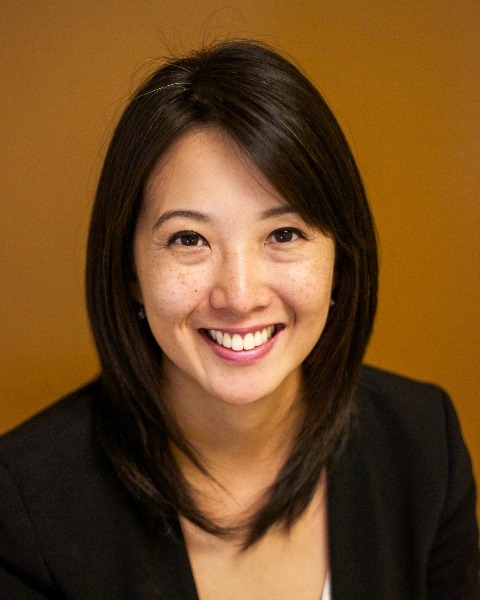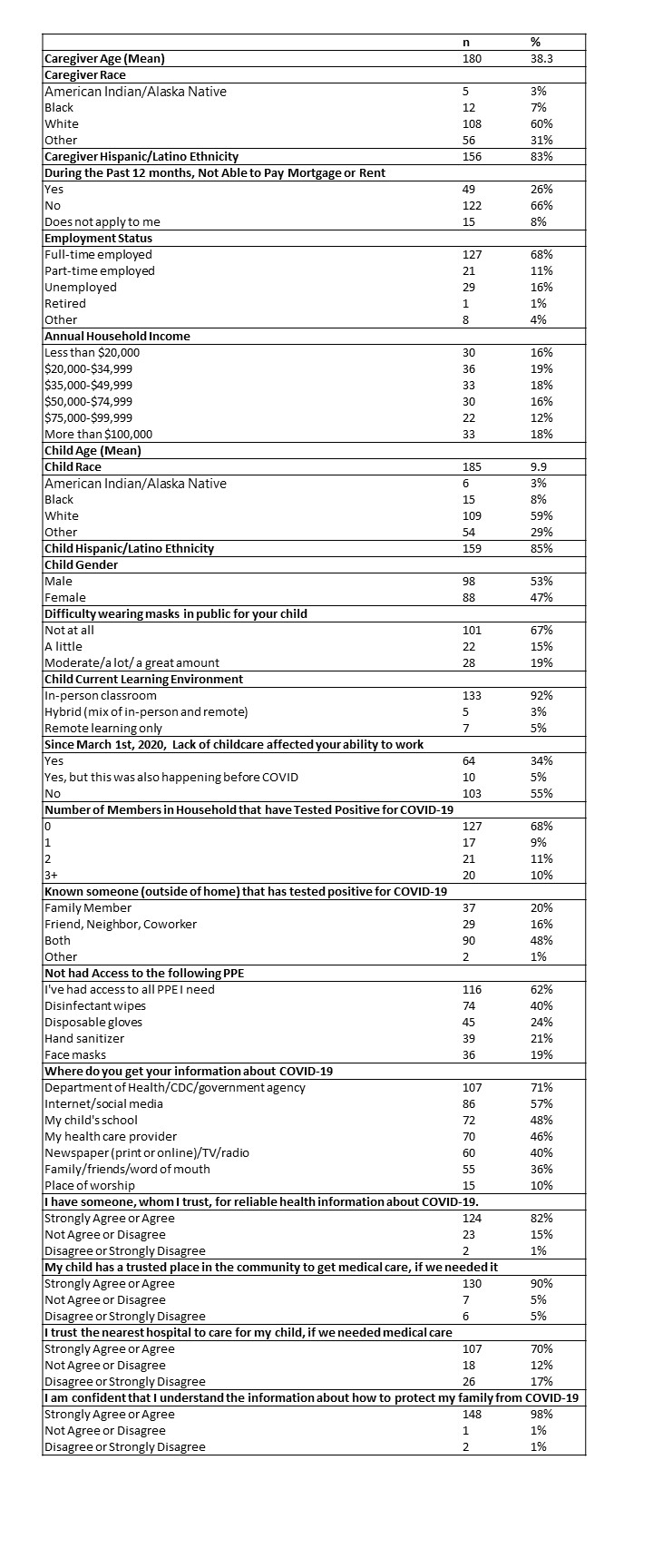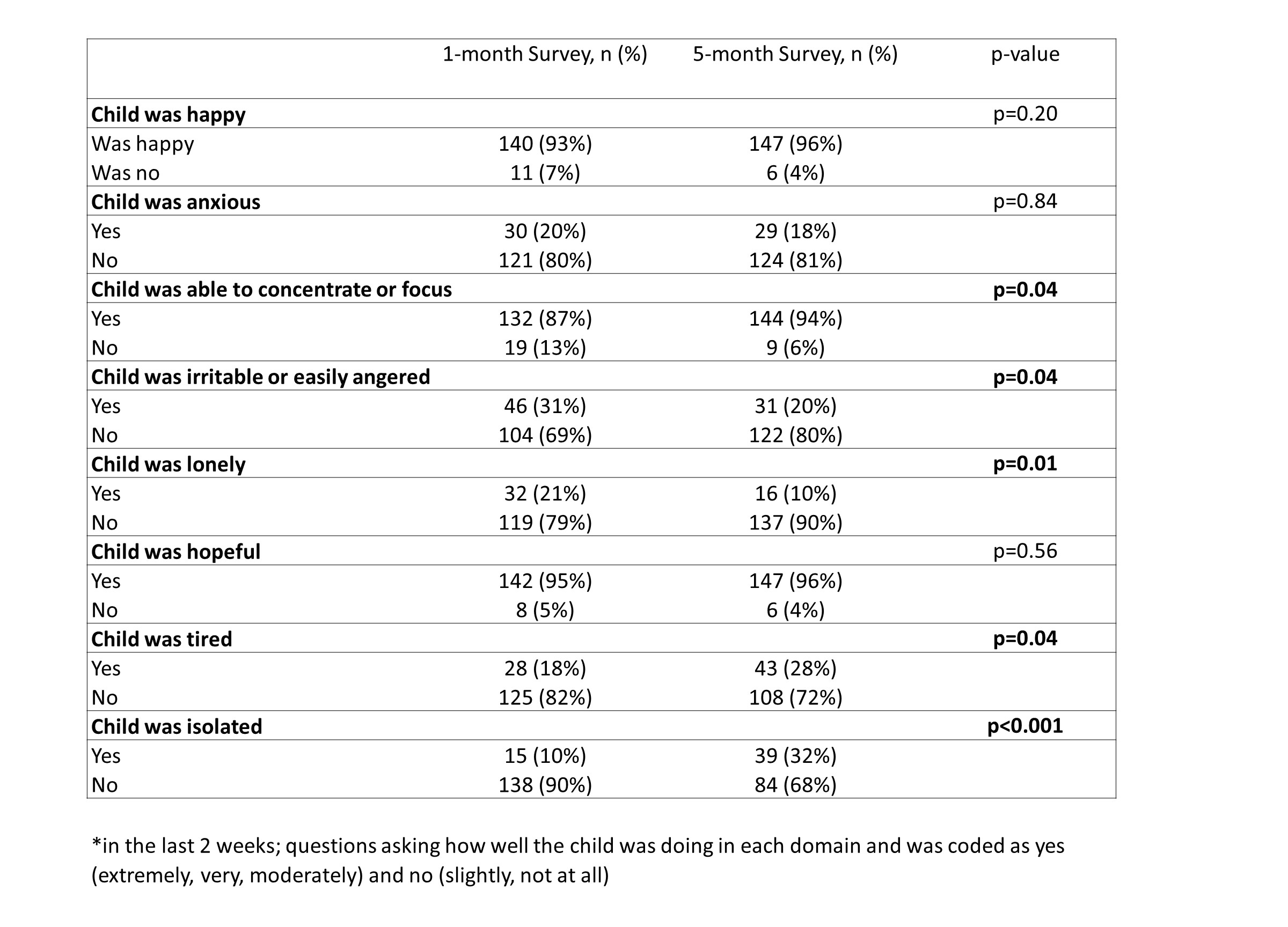Health Services Research
Category: Abstract Submission
Health Services Research I
188 - A Longitudinal Survey of Health and Well-Being of Students from COVID-19 Hotspots in Chicago
Sunday, April 24, 2022
3:30 PM - 6:00 PM US MT
Poster Number: 188
Kristin Kan, Ann & Robert H. Lurie Children's Hospital of Chicago, Chicago, IL, United States; Madeleine K. Kanaley, Northwestern University The Feinberg School of Medicine, Chicago, IL, United States; Ososese E. Enaholo, Ann & Robert H. Lurie Children's Hospital of Chicago, Chicago, IL, United States; Lu Morales, Ann & Robert H. Lurie Children's Hospital of Chicago, Chicago, IL, United States; Gwen Holtzman, University of New Mexico School of Medicine, Albuquerque, NM, United States; Khalid Ibrahim, Northwestern University The Feinberg School of Medicine, Chicago, IL, United States; Lisa Lombard, Northwestern University The Feinberg School of Medicine, Oak Park, IL, United States; Ruchi S. Gupta, Northwestern University The Feinberg School of Medicine; Ann & Robert H. Lurie Children's Hospital of Chicago, Chicago, IL, United States

Kristin Kan, MD MPH MSc (she/her/hers)
Assistant Professor
Ann & Robert H. Lurie Children's Hospital of Chicago
Chicago, Illinois, United States
Presenting Author(s)
Background: Public health monitoring found that certain neighborhoods suffered disproportionate morbidity and mortality during the pandemic. This COVID-19 study during the 2020-2021 academic year focused on students from schools with in-person learning in high-risk Chicago communities, based on COVID-19 incidence rates by zip code compared to the city average. The hotspots were predominantly composed of Hispanic/Latino families with school-aged children. Families from a large private school system were surveyed to assess their health and well-being.
Objective: Examine parents’ perceptions on children’s health and well-being related to the COVID-19 pandemic
Design/Methods: This was a 5-month longitudinal, electronic survey between January 2021 and September 2021 of parents of students at 11 K-8 schools in high-risk neighborhoods for COVID-19 infections. Parents (n=186) were surveyed at baseline, 1 month (n=151), 3 months (n=145), and 5 months (n=154). Questions were adapted from validated surveys or designed by a child health team of pediatricians and pediatric psychologists. Univariate analyses were used for descriptive statistics and chi-squared statistics were used for comparisons between survey waves.
Results: From the 186 participants, 83% of parents identified as Hispanic/Latino and reported 85% of children were of Hispanic/Latino ethnicity. Most parents (68%) reported full-time employment, although 26% had not been able to pay their mortgage or rent and 35% lacked childcare. Majority (68%) reported no household members had yet tested positive for COVID-19, but 84% knew of a family member, a friend, or both, who had. Most parents (82%) felt that had reliable information about COVID-19, and 67% felt that their child had no difficulty wearing a mask (Table 1). Overall parents rated their children’s well-being (i.e., happy, not anxious) highly (68-96%); and some areas had significant improvement in child well-being between 1 and 5-month survey waves (Table 2). While parent vaccination interest and completion increased between survey waves, there was no significant change for childhood vaccinations (Table 3). Conclusion(s): During this survey period, children’s well-being was rated highly and remained stable. This is uniquely important since nearly all these students were enrolled in in-person class, while the public school system implemented remote learning. Further, most parents felt children had no difficulty with masking. The findings reveal a critical perspective of parents of children from COVID-19 hotspot communities that could inform policies developed and implemented during and after the pandemic.
Table 1. Characteristics of Caregiver and Child and Their Perceptions and Behaviors related to the COVID-19 Pandemic
Table 2. Longitudinal Parent-Report on Child’s Well-Being*
Objective: Examine parents’ perceptions on children’s health and well-being related to the COVID-19 pandemic
Design/Methods: This was a 5-month longitudinal, electronic survey between January 2021 and September 2021 of parents of students at 11 K-8 schools in high-risk neighborhoods for COVID-19 infections. Parents (n=186) were surveyed at baseline, 1 month (n=151), 3 months (n=145), and 5 months (n=154). Questions were adapted from validated surveys or designed by a child health team of pediatricians and pediatric psychologists. Univariate analyses were used for descriptive statistics and chi-squared statistics were used for comparisons between survey waves.
Results: From the 186 participants, 83% of parents identified as Hispanic/Latino and reported 85% of children were of Hispanic/Latino ethnicity. Most parents (68%) reported full-time employment, although 26% had not been able to pay their mortgage or rent and 35% lacked childcare. Majority (68%) reported no household members had yet tested positive for COVID-19, but 84% knew of a family member, a friend, or both, who had. Most parents (82%) felt that had reliable information about COVID-19, and 67% felt that their child had no difficulty wearing a mask (Table 1). Overall parents rated their children’s well-being (i.e., happy, not anxious) highly (68-96%); and some areas had significant improvement in child well-being between 1 and 5-month survey waves (Table 2). While parent vaccination interest and completion increased between survey waves, there was no significant change for childhood vaccinations (Table 3). Conclusion(s): During this survey period, children’s well-being was rated highly and remained stable. This is uniquely important since nearly all these students were enrolled in in-person class, while the public school system implemented remote learning. Further, most parents felt children had no difficulty with masking. The findings reveal a critical perspective of parents of children from COVID-19 hotspot communities that could inform policies developed and implemented during and after the pandemic.
Table 1. Characteristics of Caregiver and Child and Their Perceptions and Behaviors related to the COVID-19 Pandemic

Table 2. Longitudinal Parent-Report on Child’s Well-Being*

